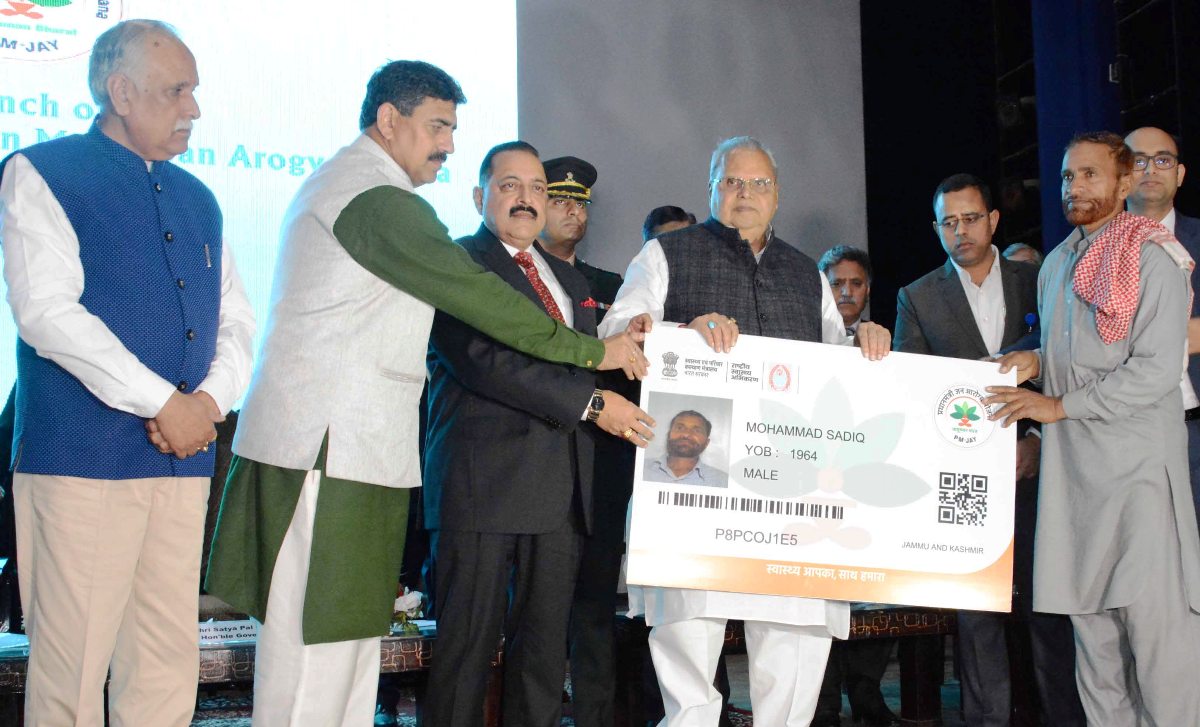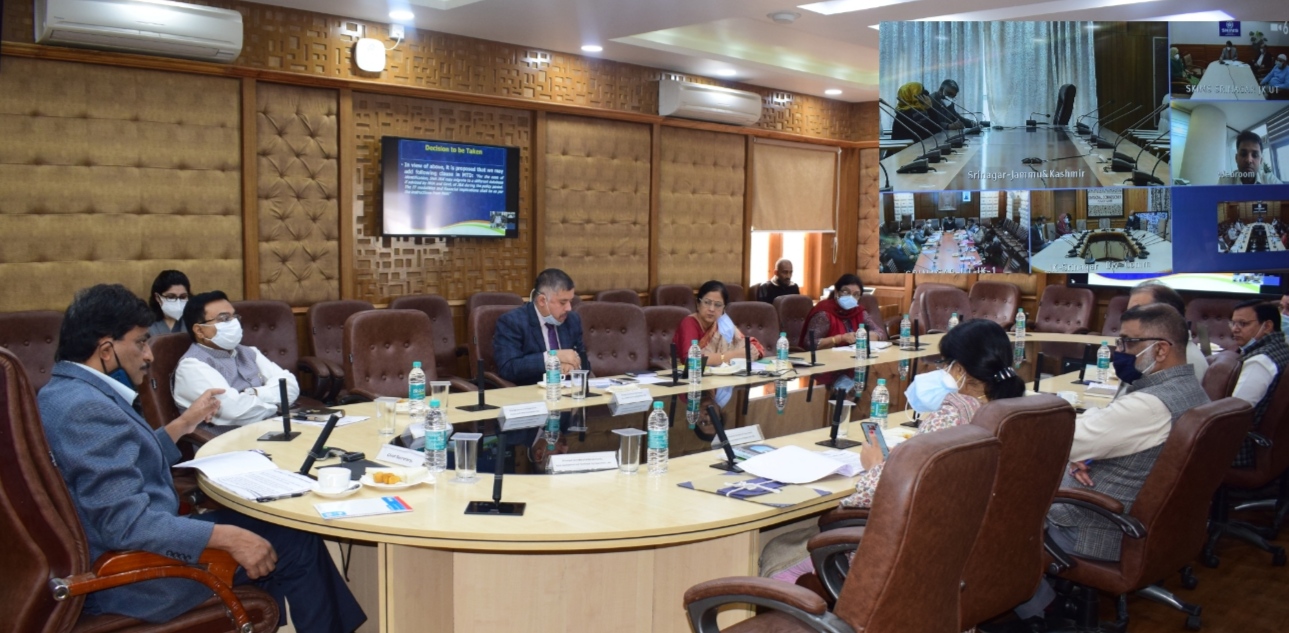With almost 90 per cent of Jammu and Kashmir’s population covered under cashless health insurance, the Ayushman Bharat scheme and almost Rs 1000 crore already spent, the Golden Card is still facing teething issues, reports Fahd Khan

When the Golden Card under the Ayushman Bharat Scheme was formally introduced in Jammu and Kashmir, there was a feeling of empowerment, especially among the low-income sections of the society. Offering cashless medical care, the facility enabled people to approach the best healthcare institutions. Unlike other states, the programme was extended to the entire population.
Over the years, however, it is facing a crippling mess on the ground. Sections of the families covered under the scheme are still claiming that they are paying for the health services because at select hospitals the cards are not being accepted. “In certain cases, they accept the card but in certain cases, they say they will not be able to manage within the card tariffs,” one cardholder said.
Background
Designed on the pattern of American Medicare, the Ayushman Bharat scheme invokes the UN’s 2010 right to health resolution and offers free healthcare insurance to cardholders. Part of universal Sustainable Development Goals (SDGs), the idea was adopted by the government of India in 2018 under the Ayushman Bharat Yojana. The system comes with coverage of Rs 5 lakh per family per year for secondary and tertiary care hospitalizations.
On December 1, 2018, the programme was extended to the entire population of Jammu and Kashmir and later in 2020 was named Ayushman Bharat-PM Jay Sehat scheme.
Implementation
Sanjiv Gadkar, the CEO State Health Agency SHA said the scheme implementation is a success. “As of right now, 77 lakh beneficiaries—or 92 per cent of the population of Jammu and Kashmir—have obtained the golden card under this programme,” Gadkar said.
“A total of 277 hospitals in Jammu and Kashmir are empanelled. These include 121 government-run hospitals and 92 privately owned health facilities and more than 70 hospitals of the government of India. Most of the diseases and more than 2300 procedures for treatment fall under this scheme”.
With a total of five lakh rupees of expenditure for every family, PM-JAY covers up to 3 days of pre-hospitalization and 15 days of post-hospitalization expenses such as diagnostics and medicines. Officials said medical examination, treatment and consultation, pre-hospitalization, medicine and medical consumables, non-intensive and intensive care services, diagnostic and laboratory investigations, medical implantation services (where necessary); and complications arising during treatment, post-hospitalization follow-up care up to 15 days – all are covered under the scheme.
“We are trying to get more and more people registered under this scheme, we are hoisting awareness programmes through radio, internet,” said Gadkar. “Almost 70 per cent of the card holders in J&K have availed benefits under this scheme.”
Officials said there are designated officials in every hospital with an online public grievance cell where people can send their queries. Action has been taken in the past against the hospitals refusing to provide treatment.
Major Sector
In Jammu and Kashmir health is a major sector with an impressive turnover. Even though there is a chain of hospitals across the erstwhile state, still there is enough of space for the private sector to chip in. Improved services, swift responses and in comparison to Delhi and other non-native hospitals, cost-effective services has given rise to a fast-growing health sector,” one insider in the sector said. “In Srinagar alone, we are almost 40 hospitals with a fair occupancy.”

Off late, the private sector has started getting into the periphery. “There is not a single major town where a private hospital does not operate,” the insider said “These hospitals have been a slow growth story as they start with a small clinic that becomes a polyclinic and then they start admissions to limited patients. In Srinagar, the private sector is offering more than 800 beds and almost two third is the occupancy in routine.”
The sector has witnessed impressive investments, at least in half a dozen major hospitals where huge equipment are installed, including some which the government tertiary care lacks. Diagnostics is an allied sector that is busy around the clock.
Despite these facilities, a section of the population prefers high-end health care in Delhi, Mumbai and Chandigarh. Some of the corporate hospitals have small offices, which help the local patients to avail their services outside. In certain cases, senior doctors have their clinics in Kashmir where they locate the potential patients for surgical operations in their main campus outside. “What we have seen is that if a patient flies out for a procedure outside, usually he ends up spending Rs 5 lakh,” one administrator of a major hospital said. “The local private sector hospitals work within the budgets and are not expensive.”
Challenges
Initially, the scheme was available to the below-poverty-line population. Later in 2020, it was extended to the entire population in Jammu and Kashmir. Soon, it started encountering problems.
“We were empanelled for three years. Till 2020 we were providing free service to all cardholders and even received the awards for being the best performing empanelled hospital,” a top managerial official in one of Srinagar’s premier private hospitals said. “We were providing cardiac services, chemotherapies, dialysis and many other services and patients who truly deserved were being benefitted.”
The hospital official said they encountered two issues. First, when the card was made universal many people who didn’t deserve free treatment got benefits and the poor were left behind. Secondly, he said, the insurance companies involved in this also didn’t credit payments in due time pushing us in a financial crisis. “We had to pay doctors for their work but we never received the payments in due time and in many cases which were already performed bills were cancelled.”
The hospital manager claimed that they have a “long-pending amount withheld with the insurance companies”. This, he said, led to the halt in accepting the card except in dialysis cases. The hospital stopped accepting the cards in January 2022 and by October 2022, the hospital was dis-empanelled.
“We never registered our hospital under this scheme,” a top manager of another major facility in Srinagar said. “Our doctors’ do not work with the rates that the card pays them. If we bring down the rates, the quality of patient care suffers and this will comprise our reputation.”
The manager said that they will join the scheme once the tariffs are fair and reasonable and the crisis in payments is managed first. “Ideally, this scheme should take care of the BPL,” he said, “The Scheme will be a great success.”
Officials Speak
The officials implementing the scheme in Jammu and Kashmir have a different story to tell. They see the scheme as a success regardless of the small issues that are confronted.
“So far there have been 601 thousand claims amounting to Rs 973 crore,” one official said. “We have already settled 502 thousand claims and paid Rs 729 crore.”
Ther Ayushman Bharat scheme is a tripartite approach. SHA, AB-PMJAY that issues the cards is the intermediary between the hospital – that treats the patient, and the insurance agency that makes the payment. “After the cases have been verified, the third-party insurance company pays the hospitals, and SHA pays those insurance companies,” Naureen Raja, SHA’s communication officer said.
It is SHA that takes the final call in issues of dispute. “Due to internet outages in 2019 and 2020, we had to switch to offline mode for a while. The fact that certain hospitals are complaining that our payments were delayed was because we gave them a deadline to submit their claims. However, the hospitals failed to do so. To resolve the claims, IFFKO, an insurance provider, has been enlisted.”
Naureen admitted to the allegations that in certain cases patients are being referred from government-run health facilities to private hospitals so that the card benefits go to the latter. “Around 15 government doctors were suspended for referring their patients to the private hospital,” Naureen said. “We have a team of 12 doctors auditing the entire process online. The audit team checks how many patients are treated by a certain doctor and to know the precise reasons if a patient is being referred to the private hospital.”
Insurance Concerns
The SHA started implementing the scheme with Bajaj Allianz. Off late, however, it is IFFKO Tokyo that is the insurance agency implementing the scheme. Sources in Bajaj Allianz said they booked substantial losses as the income was too low in comparison to the outgo on claims. They said they managed the scheme for two years at a low premium of Rs 849 per family but could not manage it beyond that.
“In a retender, we offered a higher premium and we lost the tender to a competitor that was willing to do it at a lower cost,” one executive of the company said. “The government will have to be realistic in fixing the premium and they also need to understand the past history.” The insurance companies booked losses earlier as well as they bagged the health insurance scheme of Jammu and Kashmir government employees at low costs. IFFCO bagged the scheme at a premium of Rs 1840 per family per year.
New Income
Insurance is one’s loss and another’s gain. In the golden card scheme, the private hospitals say the card tariff is unattractive and they have to make compromises with their services to accept the card.

However, it is not the case with state-run hospitals. They see a windfall in it. “It is a very good thing that has happened to the hospitals because it is a new income,” one senior doctor who works at the SMHS Hospital said. “It is a substantial income. Earlier, we used to give a fraction of it to the medical staff but the new guidelines forbid it. The entire amount goes to the hospital fund and we usually spend it on purchasing the equipment. The policy must sustain.”
The government-run health facilities were already doing what they are doing. “Earlier, the service was free but now an insurance agency pays us for this service and it is a good income,” the doctor added.
Insiders in SHA said almost 60 per cent of the claim outgo is going to the state-run healthcare set up and the private sector is only getting 40 per cent of the share.















